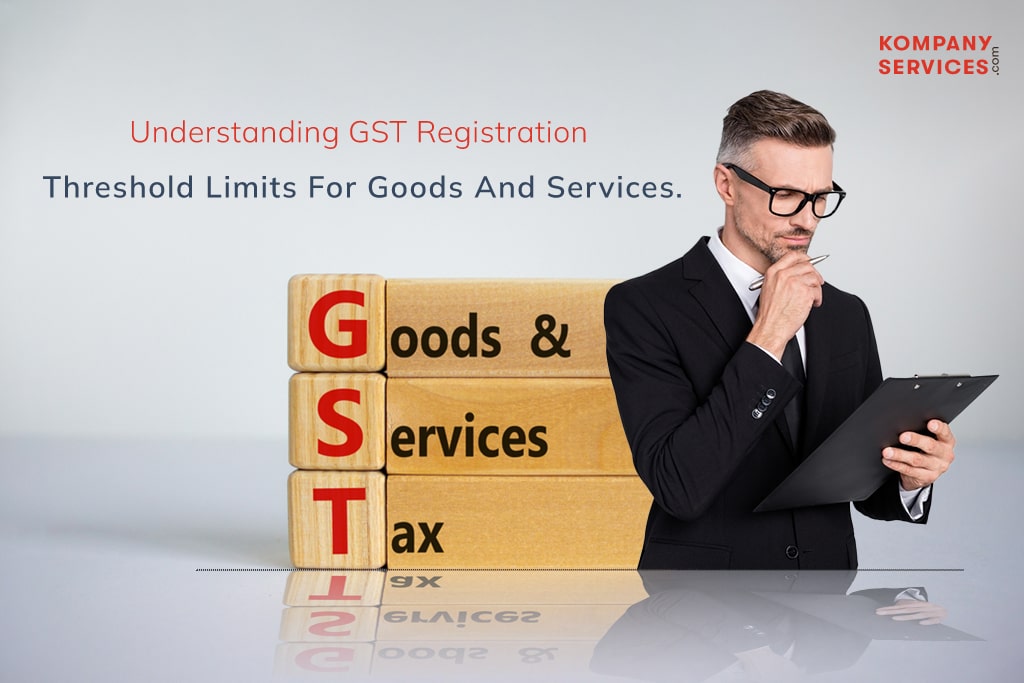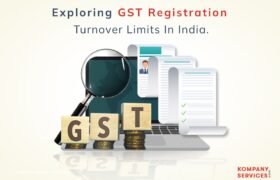India implemented an all-encompassing indirect tax, the Goods and Services Tax (GST), on July 1, 2017. It included all of the state and federal indirect taxes. The minimum annual revenue that a company must have in order to be required to register for GST is known as the GST threshold limit. Both the nature of the firm and the state in which it is based determine the exact threshold limit. The limitations on GST registration are detailed in this article. Learn more about the changes, including the new GST registration limitations, the previous threshold restrictions, and who is affected. At the same time, our GST search tool is available to you in case you wish to verify the registration status of your vendors or purchasers. Quickly obtain results by entering the GSTIN!
The Financial Year is Used to Calculate Total Revenue
The aggregate turnover for the current financial year (in this example, FY 2019-2020) is examined for the applicability of new threshold restrictions. Every provider whose total revenue in the current financial year exceeds the threshold limitations must register for GST. However, certain types of people are required by law to register for GST:
- Online Service Providers providing service from outside India to a non-registered person in India.
- Persons making a sale on behalf of someone else whether as an Agent or Principal.
- Suppliers who supply goods through e-commerce operators who are liable to collect tax at source.
- Interstate suppliers
- Persons required to deduct TCS under GST
- Persons taxable under the reverse charge basis
- Every e-commerce operator providing a platform to suppliers to make supply through it.
- Casual Taxable persons
- Non-resident taxable persons
- Persons required to deduct TDS under GST
- Input Service Distributors
Threshold Limits:
Normal Category States:
- Goods: Rs. 40 lakhs per year
- Services: Rs. 20 lakhs per year
Special Category States:
- Goods: Rs. 40 lakhs per year
- Services: Rs. 10 lakhs per year
Modified requirements for participation in the Composition Scheme
- The composition scheme’s yearly turnover criteria was raised to Rs.1.5 crore on April 1, 2019, among other changes. Quarterly tax payments and annual returns are required of taxpayers enrolled in the plan as of 1st April 2019. For states in the North Eastern region and Uttarakhand, the ceiling is still 75 lakh Indian rupees. Even eateries that don’t serve alcohol are subject to the limit.
- It was made possible for service providers to access the composition scheme: A flat 6% tax rate, consisting of 3% CGST and 3% SGST, is being introduced under the new structure. Anyone having a yearly revenue of up to Rs.50 lakh from the previous fiscal year can participate in this scheme, whether they are sole proprietors, partnerships, or corporations.
Minimum Requirement for Products
The minimum capital required to operate a goods-dealing business in a regular state is 40 lakhs, whereas in a special category state it is 20 lakhs. The northeastern states, Jammu and Kashmir, Uttarakhand, and Himachal Pradesh are all considered special category states.
Service Minimum Requirement
The threshold limit for service-providing enterprises in normal states is 20 lakhs, whereas in special category states it is 10 lakhs.
Enrollment by Choice
Voluntary registration for GST is still an option for businesses with a turnover below the threshold. Input tax credit (ITC) claims and tax-free supply of goods and services to other GST-registered enterprises are two of the many advantages of voluntary registration.
Determining Total Turnover
All supply, whether taxable or exempt, as well as exports and interstate sales, are included in the aggregate turnover. However, it does not cover inbound commodities subject to reverse charge or any of the federal, state, union territory, integrated, or cess taxes.
Failure to Register for GST
Companies face fines of up to Rs. 10,000 for failing to register for GST, which is a mandatory requirement. Additionally, they may have to pay taxes on their sales starting from the day they were supposed to register.
How do Calculate Annual Aggregate Turnover?

- Value of taxable sales
- Value of exempt supplies
- Value of exports of goods or services
Value of inter-state supplies to a sister concern under the same PAN, or inter-state stock transfers, or supplies between distinct persons under the same PAN The aforementioned total does not include taxes levied by the federal government, individual states, the union territory, the integrated tax, or cess. Additionally, it excludes the taxable value on which a person has to pay tax due to reverse charge. However, note that the taxable supplies in total turnover should include the reverse-chargeable sales.




